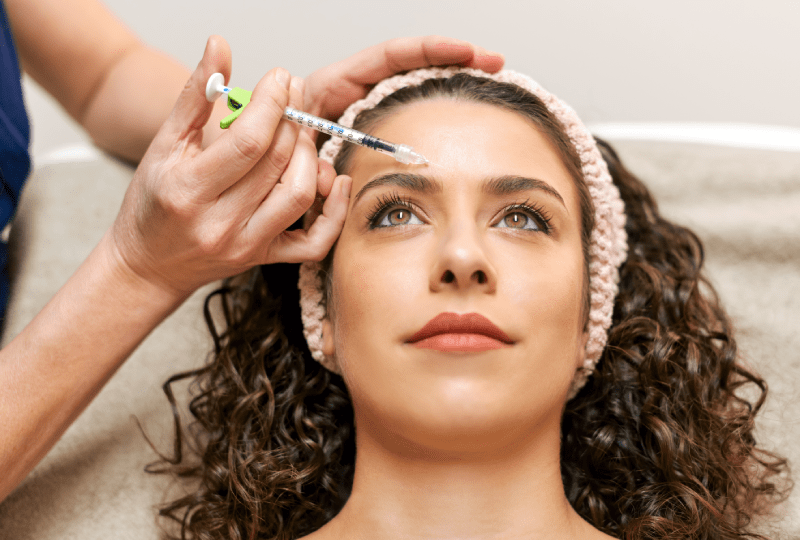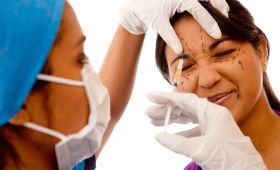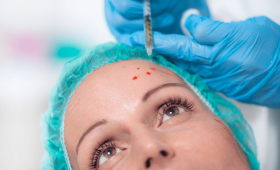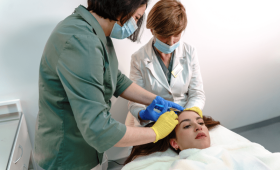Botox (Botulinum Toxin) applications are among the most frequently preferred methods today, not only for aesthetic wrinkle treatment but also for medical conditions such as migraine and hyperhidrosis. Having accurate information about this fast, effective, and non-surgical procedure is vital for the success and safety of your treatment process. In this comprehensive guide, you will find detailed and scientific answers to all your questions, from what Botox is to its application techniques, pricing dynamics, and potential risks. Remember that Botox application should always be performed by an expert physician in a sterile clinical environment.
What is Botox and What Does It Do?
Botox is actually a purified protein obtained from a bacterium called Clostridium botulinum. When used in very low doses for medical and aesthetic purposes, it temporarily blocks the signals transmitted from nerve endings to the muscles. This signal interruption prevents the injected muscles from contracting and relaxing. In the aesthetic field, this effect is used to reduce or completely eliminate the appearance of dynamic wrinkles, such as forehead lines, frown lines, and crow’s feet, which are mainly caused by mimic muscles. Thanks to its muscle-relaxing properties, it also provides great benefits in problems caused by muscle tension, such as teeth clenching and migraines. Contrary to concerns about whether this protein accumulates in the body or leaves permanent damage, it is a safe substance whose effect completely disappears over time.
How is Botox Performed?
The Botox procedure is a simple and fast process, often referred to as the “lunchtime procedure.” First, the application area is cleaned, and the area is numbed by applying an anesthetic cream to the points determined by your doctor. The treatment area is meticulously mapped according to the patient’s muscle structure and wrinkle depth. Then, the Botox substance is injected directly into the target muscle through very fine needles (similar to insulin needles). The procedure takes 10 to 30 minutes, depending on the number of areas, and the patient can immediately return to their daily life afterward. For a successful result, injecting the correct amount (unit) into the correct muscles is critically important. The comfort during the procedure is quite high thanks to the effect of the applied anesthetic cream.
Who is Botox Suitable for?
Botox treatment is generally suitable for healthy individuals between the ages of 18 and 65. The most common patient group consists of people who have developing deep lines on their faces caused by mimic muscles. Medically, it is an ideal solution for chronic migraine sufferers, those with excessive sweating (hyperhidrosis), and those suffering from tooth wear and jaw pain due to teeth clenching (bruxism). However, there are conditions where Botox should absolutely not be applied: pregnant or breastfeeding women, those with active infection or inflammation in the injection area, and individuals with some rare neuromuscular diseases (such as myasthenia gravis) should not receive this treatment. Consulting a specialist for a detailed health history evaluation is the first step in determining the suitability of the treatment.
What are the Types and Techniques of Botox Aesthetics?
Although the main goal of Botox aesthetics is muscle relaxation, it takes different names depending on the technique applied. Classic Botox aims to largely eliminate wrinkles, while Baby Botox (Micro-Botox) is performed with lower doses spread over a wider area, providing a more natural look that does not completely freeze expressions. The Micro-Botox technique can also be applied to the more superficial layers of the skin to improve skin quality and reduce the appearance of pores. In addition, special techniques such as the Nefertiti Lift, which defines the neck and jawline, are also available. Each technique is specially selected and applied by the doctor based on the patient’s age, skin structure, muscle strength, and aesthetic expectations. Choosing the right technique is key to successful and natural results.
For What Purpose and Where is Botox Applied?
Botox is applied to many different areas of the face and body for various purposes. The most common aesthetic applications include:
- Forehead lines (surprise lines)
- Frown lines (“11” lines or anger lines)
- Wrinkles around the eyes (crow’s feet)
Medical applications include:
- Chin (Masseter) Botox: Treatment of bruxism (teeth clenching) and slimming the jawline.
- Armpit Botox: Treatment of excessive sweating (hyperhidrosis).
- Migraine Botox: Reducing the frequency and severity of chronic migraine attacks.
- Neck Botox (Nefertiti Lift): Relaxing neck bands and improving the jaw contour. It can also be used to lift a drooping nose tip or soften barcode lines above the lips. Since the muscle structure of each area is different, success depends on the physician’s anatomical knowledge.
Things to Consider After Botox
There are a few basic rules to observe after the Botox application to maximize its success and minimize the risk of side effects. For the first 4 to 6 hours after the application, you must strictly avoid lying down and bending forward. This prevents the spread of Botox from the injected area to unwanted adjacent muscles. During the same period, the treated areas should not be massaged, pressed, or rubbed. For the first 24 hours, activities that increase body temperature, such as intense exercise, sauna, Turkish bath, or hot showers, should be avoided. In addition, the use of alcohol and blood-thinning medications (such as aspirin) should be restricted for a period before and after the procedure, as they can increase the risk of bruising. Adhering to these simple rules maximizes the effectiveness and safety of the treatment.
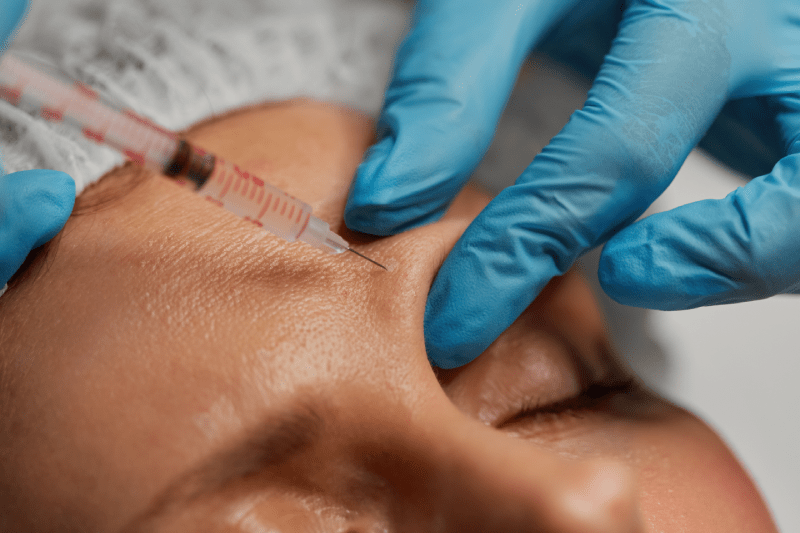
What are the Advantages and Disadvantages of Botox?
The biggest advantages of Botox are that it is non-surgical, has no downtime, provides quick results, and its cost is much lower than surgical procedures. It is a painless procedure that, when applied correctly, provides a younger appearance without disrupting facial expressions. Its medical benefits (migraine and sweating treatment) are also a major plus. The main disadvantage is that its permanence is temporary; it needs to be repeated every 4-6 months to maintain its effect. Temporary asymmetry, brow or eyelid drooping may occur due to incorrect dosing or injection technique, but these situations are rare and can be prevented with the selection of an expert physician. Since the results are reversible, even unwanted effects usually resolve within a few weeks.
Is Botox Harmful?
Botox is a substance that has been approved by international health authorities such as the FDA (US Food and Drug Administration) and has been used safely for decades. It is not harmful when applied by authorized physicians in correct doses and under appropriate medical conditions. The risk of the toxin spreading in the body and causing systemic harm is practically non-existent due to the very low doses applied. The public perception of it as a “poison” or “paralyzing substance” stems from the toxic nature of Botox, which can be deadly in high doses; however, the amount used in aesthetic or medical treatment is far from these risks. The important thing is to have the treatment done not in unverified places, but only by authorized and experienced dermatologists or plastic surgeons in sterile clinics.
Is Botox a Painful Procedure?
The Botox application is generally described as a procedure that causes minimal discomfort, often described as a “slight sting” rather than “pain.” Thanks to the highly effective topical anesthetic creams applied before the procedure, the injection points are largely numbed. Furthermore, the needles used when injecting Botox (30-32 gauge) are so fine that the discomfort you feel is momentary and temporary. Even if more injections are required for migraine or sweating treatment, this stinging sensation quickly disappears. An experienced physician, in particular, keeps patient comfort at the highest level by performing injections quickly and gently. Consequently, fear of pain is not a valid reason to avoid Botox treatment.
When Should I Get Touch-Ups After Botox?
The muscle-relaxing effect of Botox lasts for an average of 4 to 6 months. At the end of this period, nerve-muscle signal transmission gradually restarts, and the mimic muscles begin to move again, causing wrinkles to reappear. The most appropriate time for a touch-up (repeat) session is the period when the first slight signs of wrinkles reappear, without waiting for the effect to completely wear off. Getting Botox regularly (for example, every 5 months) permanently slows down the deepening of wrinkles by keeping the muscles relaxed for a long time. This regular repetition supports the need for lower doses in the long run and a continuously smooth skin appearance. Your physician will determine the most suitable repeat interval for you based on your muscle strength.
Will My Face Have a Dull, Expressionless, and Strange Appearance After Botox?
This is one of the most common misconceptions about Botox and often results from incorrect application techniques. When applied by experts and in correct doses, the goal of Botox is not to completely paralyze the muscles, but only to soften the muscle movements that cause wrinkles. The right techniques (especially Baby Botox) aim for a rested and rejuvenated look while preserving natural expressions. The reason why the face looks dull or expressionless is due to the injection of excessive doses and wrong points. An experienced physician avoids the “shocked” or “frozen” facial expression by customizing the dosage, so your smile, surprise, and other expressions remain natural.
How Long Does Botox Take to Take Effect?
The activity of the Botox substance on the muscle does not appear immediately. The onset of the blockade of signal transmission at the nerve endings by the injected Botox is usually felt within 3 to 4 days after the application. The significant reduction of wrinkles and the muscle reaching its maximum relaxation point are completed within 10 to 14 days. For this reason, doctors usually call their patients for a control session on the 14th day to see the final result of the procedure and perform a free touch-up if necessary. It is critically important for patients to patiently wait for this 2-week period for the result to be evaluated.
What Should I Do to Enhance the Effects of Botox?
There are several lifestyle and care recommendations to prolong and enhance the effect of Botox. First, Sun Protection is very important; sun damage breaks down collagen, accelerating wrinkles. The use of high-factor sunscreen is essential. Additionally, healthy nutrition (foods rich in antioxidants) and adequate water consumption support skin quality. Activities that rapidly increase body temperature, such as intense exercise or sauna, can shorten the effect of Botox; therefore, it is recommended to take a break from such activities for a while after the procedure and generally not to overdo it. A quality skin care routine (with products that support collagen production, such as retinol) reinforces and maintains the smooth appearance provided by Botox.
Is Skin Care Required After Botox?
Yes, caring for your skin after Botox helps both speed up the healing process and support the effect of Botox. For the first 24 hours after the procedure, irritating applications such as chemical peeling, laser, or facial massage should be strictly avoided. After that, you can continue your daily skincare routine; however, this routine should be gentle. Especially anti-aging serums and moisturizers help maintain the overall health and elasticity of the skin where Botox has achieved its goal. Your physician may recommend creams that can be applied specifically to the injection areas, accelerating healing or reducing bruising. While Botox prevents the formation of wrinkles, quality skincare helps preserve the overall youthfulness of the skin.
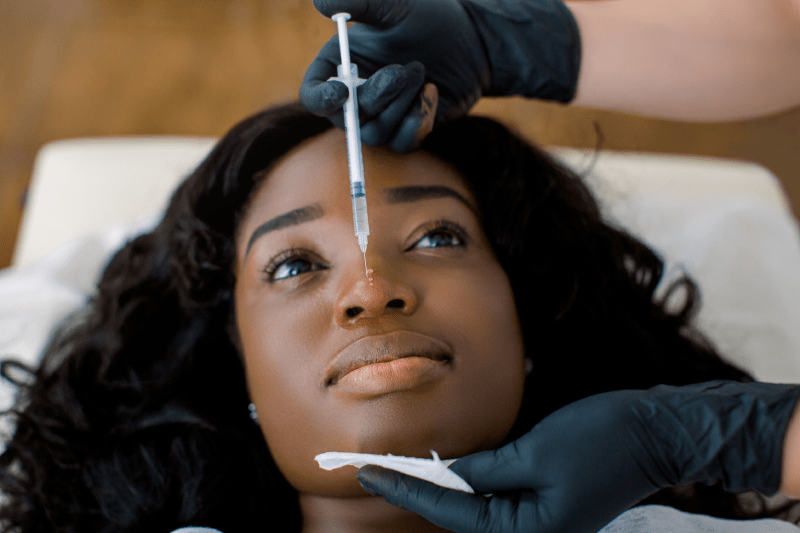
When Is Botox Applied?
There is no ideal season or special time frame for Botox application; it can be done safely at any time of the year. Contrary to popular belief, there is no harm in having it done in the summer months, it is only necessary to avoid direct sun contact on the first day after the procedure. Many people prefer to have the application about 3-4 weeks before an important event (wedding, graduation, holiday) so that the effect of Botox is fully settled. This period allows both the full effect to be seen and provides enough time for any minor bruising to completely disappear. The frequency of treatment varies from person to person depending on the duration of permanence (usually every 4-6 months).
Are There Any Risks to Botox?
As with any medical procedure, Botox also has some risks, but these are generally mild and temporary. The most common risks are temporary bruising, swelling, or redness at the injection site. More serious, but quite rare, risks include:
- Temporary eyelid or brow ptosis due to spread to unwanted muscles.
- Asymmetrical (non-symmetrical) appearance.
- Very rare allergic reactions. The vast majority of these risks are minimized by an expert physician by injecting Botox at the correct point and in the correct dose. If you choose an experienced professional and follow the post-procedure instructions, the risks drop to an acceptable level. The important thing is to be aware of the potential risks and to receive treatment in an experienced clinic.
Does Botox Cause Paralysis?
Although Botox is technically a neurotoxin that paralyzes muscles, it does not cause permanent paralysis in aesthetic and medical applications. The application only provides a temporary chemical denervation (temporary interruption of nerve connection). The effect of Botox completely reverses as the nerve ending regenerates and lasts for an average of 4 to 6 months. If applied in the correct amount and to the correct muscles, the goal is only to relax the muscles that cause wrinkles. Other muscles responsible for facial movement are not affected. Therefore, conditions such as permanent facial paralysis or body paralysis are not associated with aesthetic Botox applications and are risks that should only be taken with very high doses under uncontrolled conditions.
Botox Prices
Botox prices, although in a more accessible range compared to other aesthetic applications, vary greatly in Turkey and globally. Prices in Turkey are quite competitive thanks to the exchange rate advantage compared to Western countries. Price quotations are usually given in two ways: Pricing Per Area (a single price for popular 3 areas such as forehead, frown lines, and eye area) or Pricing Per Unit. For example, a crow’s feet application alone will be cheaper than full-face Botox. For the most accurate price information, you need to have a detailed preliminary consultation, stating the scope of your application, and rely only on the final price determined by your clinic. Avoiding places that offer very low prices is important for product quality and physician experience.
What Depends on Botox Prices?
Botox prices depend on many dynamic factors. The most important of these is the Botox Brand Used and its Originality; FDA-approved, original products are more costly than counterfeit or low-quality products. Secondly, the Experience and Expertise of the Practitioner Physician directly affects the price; a Plastic Surgeon or Dermatologist who is an expert in their field will naturally charge a higher fee. The third factor is the Application Area and Dosage; full-face Botox is more costly because it requires more units than just hyperhidrosis Botox or just one area. Finally, the City and the Luxury Level of the Clinic’s Location (for example, a clinic in Nisantasi, Istanbul, has higher overhead costs than a clinic in Anatolia) is a determinant in pricing.
Botox and Migraine Treatment: What is the Connection?
Botox has been used as an FDA-approved method in the treatment of chronic migraines since 2010. It is applied to patients who do not respond to traditional painkillers and suffer from headaches more than 15 days a month. Botox is injected into 31 different points in the head and neck region, blocking the nerve pathways that transmit pain signals to the brain. This not only relaxes the muscles but also reduces migraine triggers at the neural level. The treatment can significantly reduce the frequency and severity of pain, improving the quality of life of patients. Migraine Botox requires a much higher dose and a different injection protocol than aesthetic Botox, and therefore its pricing is also different. This treatment should only be administered by neurology specialists or dermatologists competent in this field.
What is Chin Botox (Masseter Botox) Used for?
Chin Botox provides two main benefits aesthetically and medically. For medical purposes, it is applied to patients with teeth grinding and clenching (bruxism) problems. When the Masseter muscle (chewing muscle) is overdeveloped, it clenches involuntarily throughout the night, causing tooth wear, headache, and jaw joint pain. Chin Botox greatly eliminates these problems by relaxing this muscle. For aesthetic purposes, it slims the masseter muscle, giving a square and wide face line a more oval and slender appearance. This application is popular, especially among female patients, to achieve a more graceful facial contour. The full results and noticeable jaw slimming generally take 4 to 6 weeks to set in.
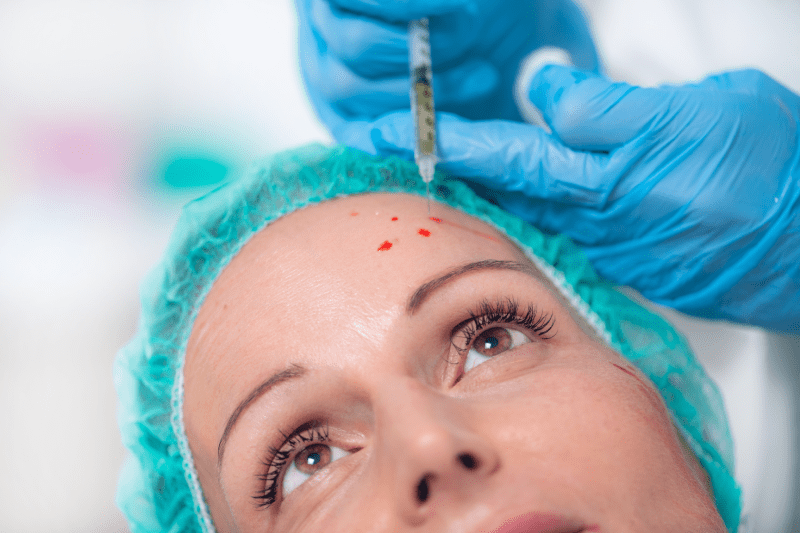
Do Wrinkles Get Worse When the Botox Effect Wears Off?
This is a frequently asked question and a common misconception about Botox. Absolutely no, wrinkles do not look worse than before when the effect of Botox wears off. During its effective period, Botox limits muscle movement, preventing existing wrinkles from deepening and even softening them. When the effect disappears, the skin returns to its natural state before the treatment. If you hadn’t had Botox, your mimic muscles would have continued to work during this 4-6 month period, causing your wrinkles to deepen further. Thus, Botox acts as a “preventive” treatment, slowing down your skin’s aging process.
Is Botox Applied to Under-Eye Dark Circles?
Under-eye dark circles and bags are usually caused by thinning skin, vascularity, genetic factors, or volume loss. Since Botox is a muscle relaxant, it is not the primary treatment for these types of problems. For under-eye dark circles, treatments that improve skin quality, such as light filler (hyaluronic acid filler) or mesotherapy, are generally preferred. However, in some cases, Botox can be used in very low doses to reduce wrinkles by slightly relaxing the lower eyelid or to soften the appearance of under-eye bags. This is an extremely delicate area and requires expertise. Although it is not the main treatment method, Botox can be considered a supportive application.
What Preparations Should Be Made Before Botox Treatment?
Preparing for Botox treatment increases the comfort of the procedure and minimizes the risk of bruising. At least 1 week before the treatment, you should consult your doctor and stop using blood-thinning medications (like aspirin, ibuprofen), vitamin E, fish oil, and supplements like gingko biloba, as these increase the risk of bruising and bleeding. Alcohol consumption should also be stopped at least 24 hours before the procedure. It is important to come to the treatment with a clean face and without makeup. If you have an active skin infection (like cold sores) or a wound in the injection area, the treatment should be postponed. These simple preparations maximize both your healing process and positively support the effect of Botox.
When Should Sports and Exercise Be Done After Botox Treatment?
For the first 24 hours after Botox, intense sports, weight lifting, or exercises that require you to bend your head forward should be strictly avoided. Intense physical activity can increase the risk of Botox spreading to unwanted areas by increasing blood flow, and can also worsen swelling or bruising in the injection areas. After the first day, activities like light-paced walking can be done, but it is recommended not to return to heavy exercise routines until 48 hours have passed. Allowing your muscles to settle and the Botox to remain in the correct points is a critical factor for the success of the treatment.
What are the Product Brands Used in Botox Treatment?
There are several main brands used in Botox treatment in Turkey and worldwide. Among the most known and reliable brands are Allergan (Botox®), Dysport®, and Xeomin®. All of these brands are approved by international authorities and their effectiveness is proven. The diffusion rate (the way it spreads into the muscle) and protein content of each brand may differ slightly, which may lead some physicians to prefer different brands for certain areas. The important thing is that, no matter which brand you use, the product must be original, have its cold chain maintained, and be Ministry of Health-approved. Reliable institutions like Cure Holiday prefer clinics that only work with original and approved brands.
Turkey: The Meeting Point of Quality and Cost Advantage
Despite the high-standard service it offers in aesthetic and health tourism, Turkey provides a major cost advantage due to the exchange rate difference. The opportunity to receive world-class treatment with FDA-approved products at prices far below those in Europe and America makes Turkey attractive for Botox. This price advantage, combined with the quality workmanship from expert Turkish physicians with international experience, creates a unique value for patients. Receiving treatment in Turkey offers the opportunity to both save your money and enjoy a comfortable holiday.
Make an Informed Decision About Botox
Botox is a safe and effective procedure that provides extraordinary results in rejuvenation and improving quality of life when performed by the right hands. Although the application is simple, the science and anatomical knowledge behind it are complex. Therefore, the key to success in Botox treatment is choosing the right physician and the correct dosage. Remember, the biggest risk associated with Botox is applications performed by unauthorized persons and under non-sterile conditions. This guide will establish a foundation for you to take informed steps on your Botox journey.
